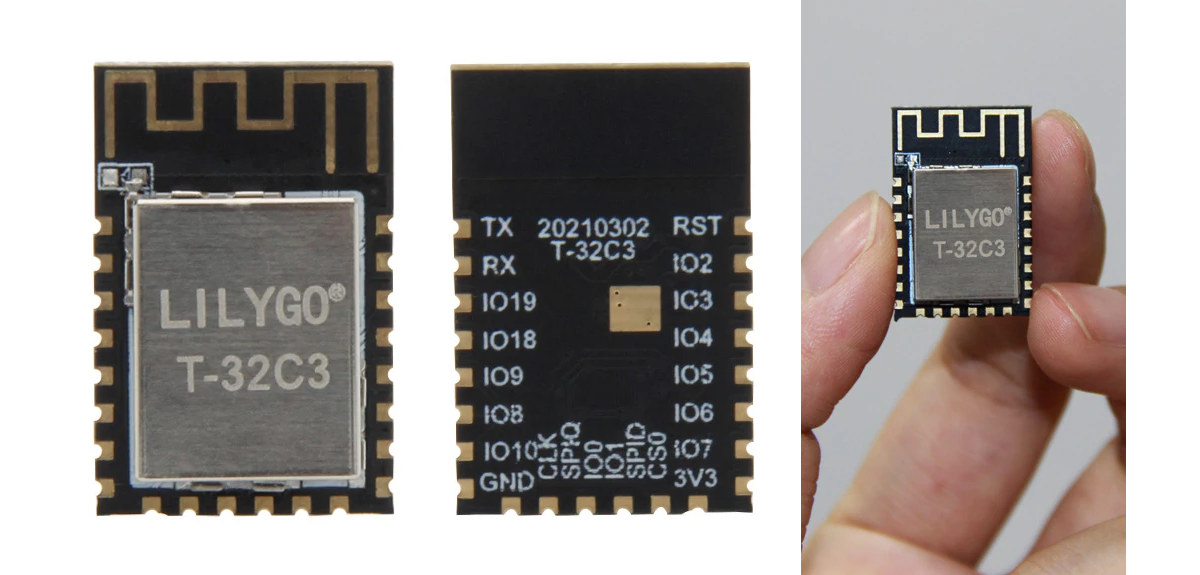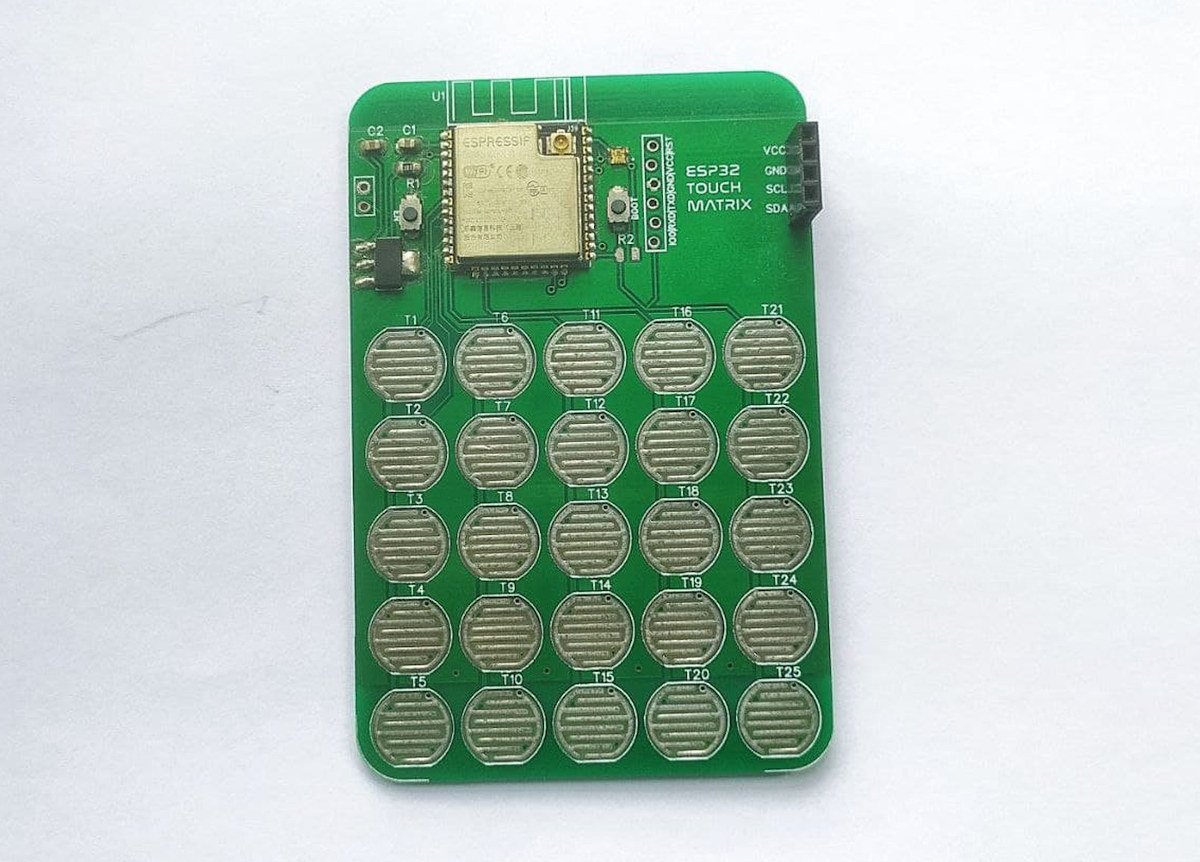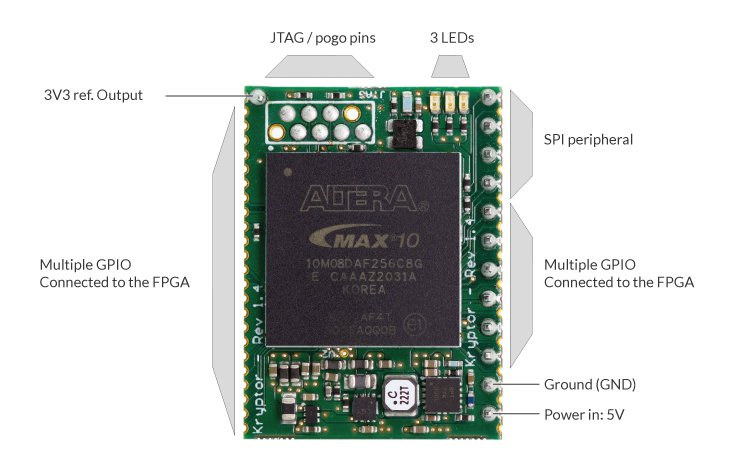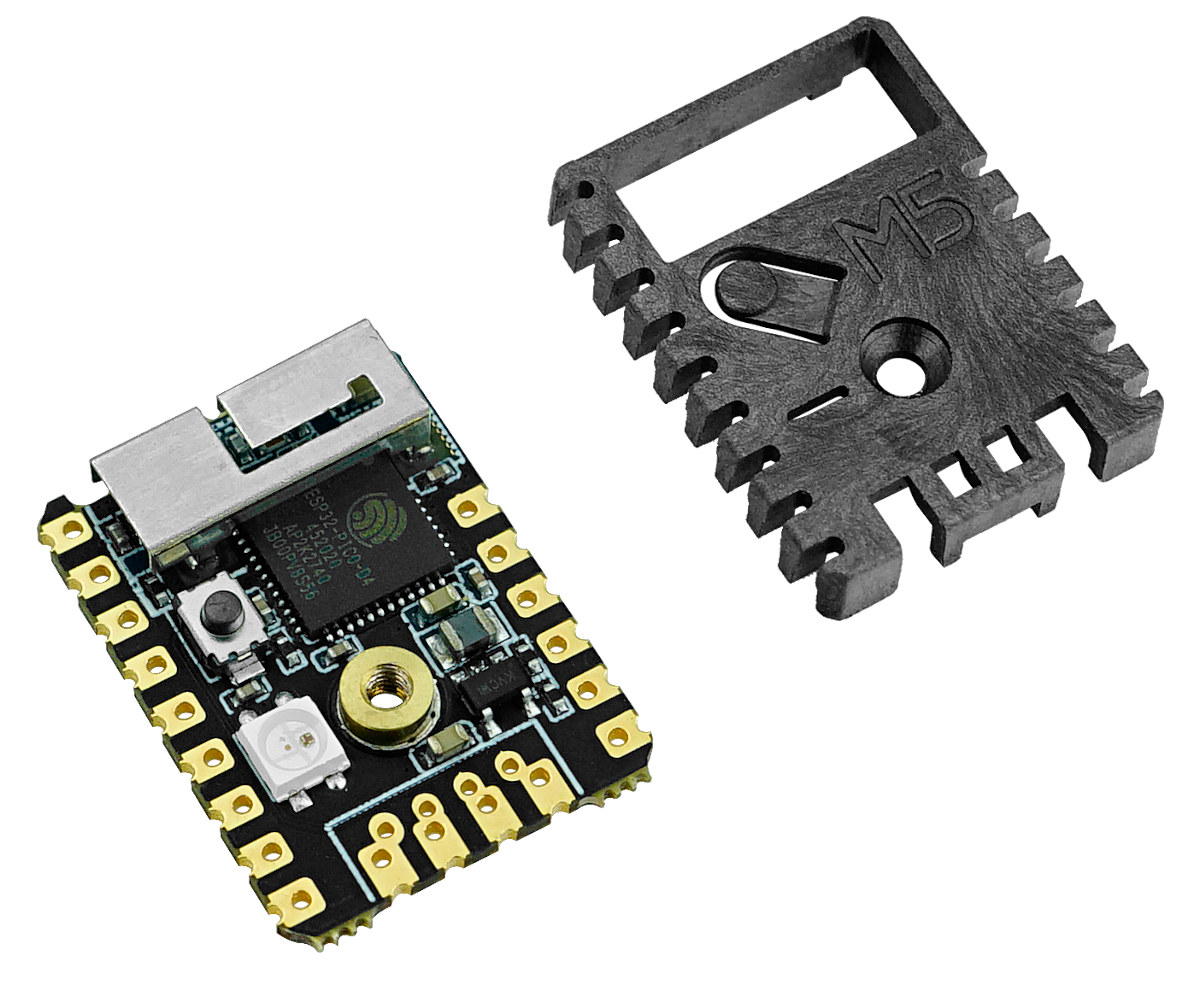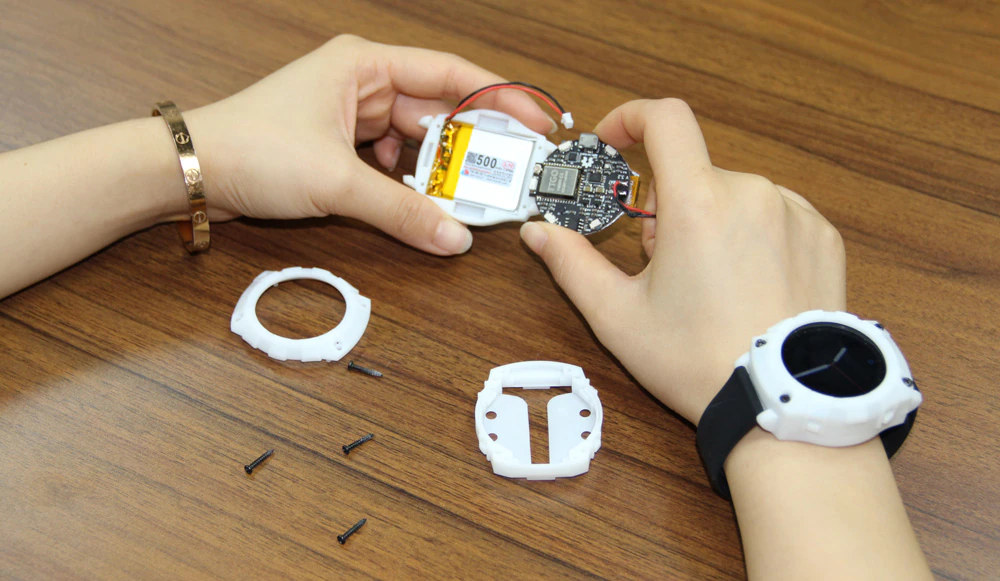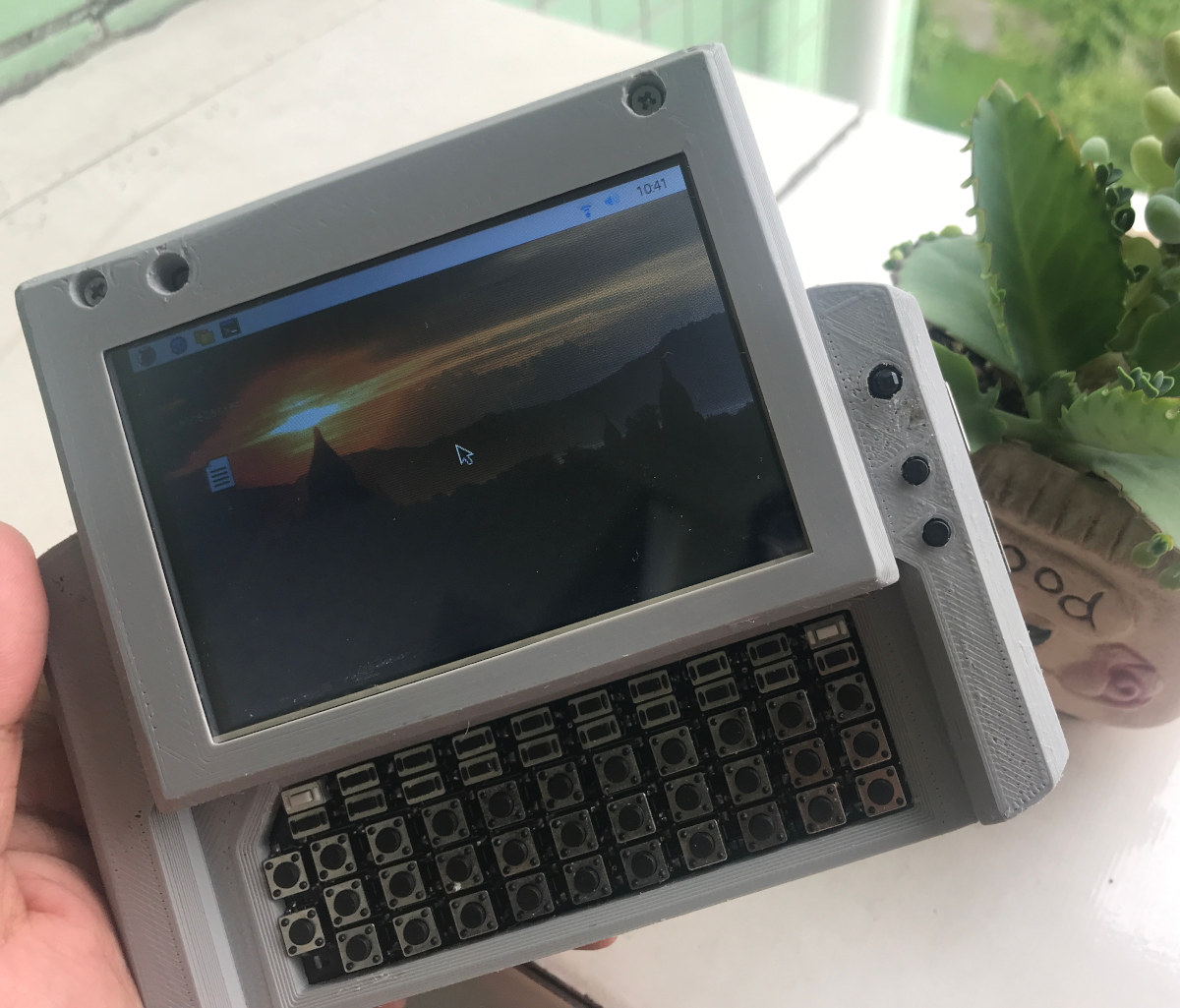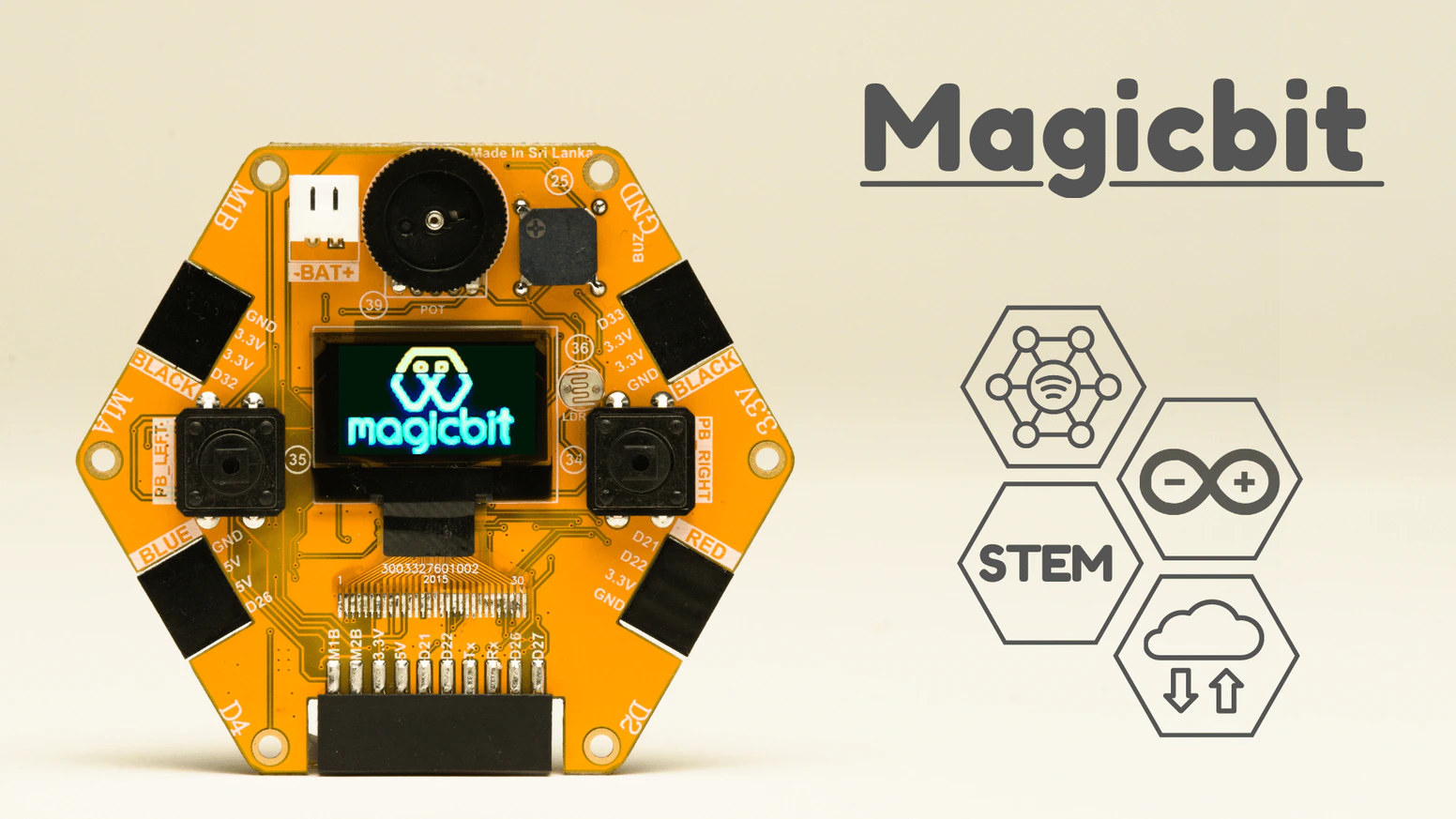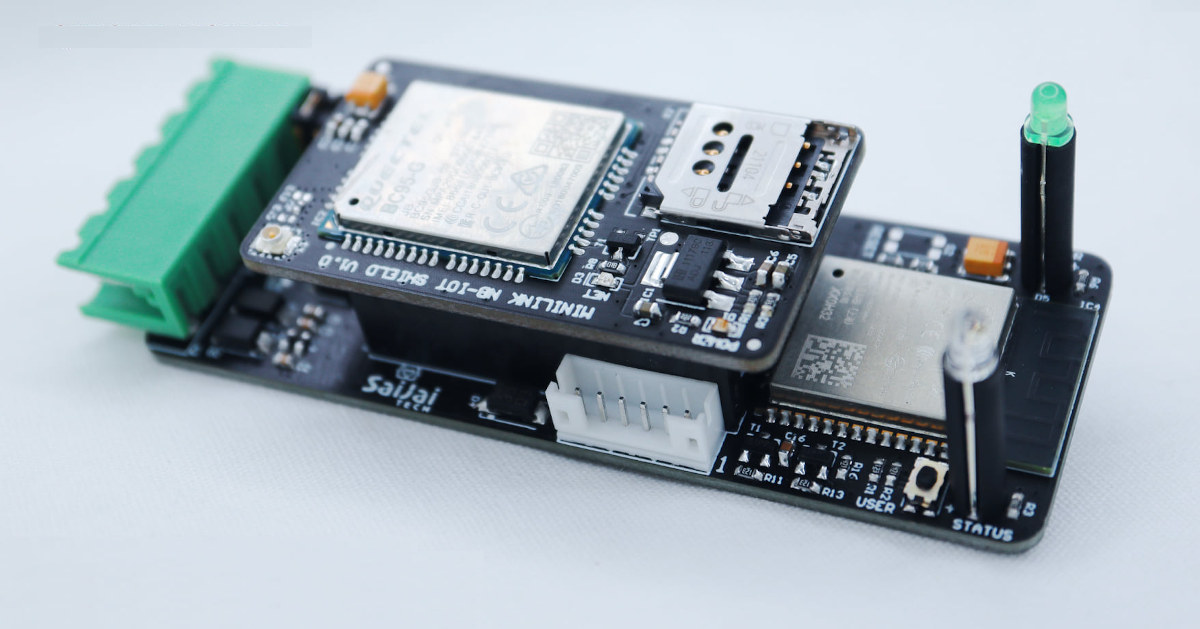We’re slowly starting to see more hardware-based on ESP32-C3 RISC-V processor, and LILYGO T-32C3 is a compact module based on the WiFi & Bluetooth LE processor that includes 4MB flash and a PCB antenna. I’d expect T-32C3 to be eventually found in the company’s smartwatches and development boards, and it joins other ESP32-C3 modules from AI Thinker. LILYGO T-32C3 module specifications: SoC – Espressif ESP32-C3 RISC-V processor @ 160 MHz with 400 KB SRAM, 384 KB ROM, 8KB RTC SRAM, 2.4 GHz WiFi 4, Bluetooth 5.0 LE & Mesh Storage – 4MB flash On-board PCB antenna I/Os – 22x castellated holes with GPIO, 3x ADC, SPI, UART, I2C, Boot, Reset, 5V, 3.3V, GND Dimensions – 23 x 11 x 3.5 mm (4-layer PCB) Note the USB interface is not listed in the specs, but USB DN and DP signals are located on GPIO18 and GPIO19 so USB should also be […]
25-key ESP32 Touch Matrix makes good use of ESP32’s touch sensor interface
Besides the addition of Bluetooth, there are many differences between ESP8266 and ESP32 and one of the lesser-known interfaces may be ESP32’s touch sensor interface. India-based Electro Point’s ESP32 Touch Matrix makes good use of the touch sensor interface with 25 touch pads arranged in a 5×5 matrix creating a wireless keypad that could connect over WiFi or Bluetooth to a host. ESP32 Touch Matrix board specifications: Wireless module – ESP32-WROOM-32U with Espressif ESP32-D0WD dual-core Tensilica processor, 32Mbit SPI flash, 2.4 GHz WiFi, and Bluetooth LE connectivity 25 keys arranged in a 5×5 matrix Expansion – 4-pin I2C header for expansion, e.g. an OLED display Programming – Programming headers Misc – RGB status indicator, EN button Power Supply – 5V input via 2-pin header; built-in 3.3v regulator for ESP32 Dimensions – TBD When a capacitive load, such as a human hand) is in close proximity to the sense-pad, the sensor […]
Kryptor FPGA – Tiny MAX10 FPGA board works as a hardware security module (Crowdfunding)
Kryptor FPGA, sometimes just called Kryptor, is a compact Intel/Altera MAX10 FPGA development board mostly designed for encryption, and acting as a dedicated Hardware Security Module (HSM) with a custom soft-core from Skudo OÜ. But obviously, you could also use the FPGA board for other purposes. Hardware encryption can be quite more secure than software-based encryption with reduced attack surfaces, especially since data processing can be done in the FPGA RAM. The HSM can be used to encrypt files, videos, emails, IoT messages, etc… from various hardware platforms including Arduino and Raspberry Pi boards. Contrary to closed-sourced commercial solutions, the soft-core is open-source and as such can be verified by third parties to make sure there aren’t any backdoors or security flaws. Kryptor FPGA specifications: FPGA – Intel/Altera MAX10 8K LE ( 10M08DAF256C8G) FPGA @ 100 MHz with 8000 logic elements (LE), 1376 Kb flash, 378 Kb total RAM, up […]
M5Stamp Pico ESP32-PICO-D4 module ships with a heat-resistant plastic shell
Most WiFi IoT modules are designed to be integrated into products with an enclosure, but the M5Stamp Pico module based on ESP32-PICO-D4 SiP comes with a removable heat-resistant plastic shell that protects the 3D antenna and components, while leaving space to solder headers and/or a Grove connector. The tiny module also comes with a button and RGB LED, and like other ESP32-based M5Stack hardware, M5Stamp Pico is programmable with UIFlow graphical programming platform and compatible with Arduino, MicroPython, and the ESP-IDF. M5Stamp Pico specifications: System-in-Package – Espressif Systems ESP32-PICO-D4 SiP with dual-core processor @ 240MHz, 520KB SRAM, 4MB flash, and 2.4 GHz Wi-Fi 4 up to 150 Mbps and Bluetooth 4.2 BR/LE connectivity Antenna – 2.4 GHz 3D antenna I/Os – 2.54mm pitch header with ADC, DAC, touch sensor, SD/SDIO/MMC host controller, SPI, SDIO/SPI slave controller, EMAC, PWM, UART, I2C, I2S, IR remote controller, up to 12x GPIO, pulse counter […]
T-Watch 2021 ESP32 round smartwatch features ESP32 SoC, touchscreen, 500mAh battery
Back in May, LilyGo started selling “Paul’s 3D Things” Open-Smartwatch open-source hardware ESP32 watch as a kit with the board and a round display, but no case, wristband, or battery, although now a smartwatch kit, but still without battery, is available for around $30. The company has now designed the T-Watch 2021 which builds upon the Open-Smartwatch but adds features like a touchscreen display, a vibration motor, a magnetometer, and ships as a devkit with board and display or a complete smartwatch kit including a 500mAh battery. T-Watch 2021 specifications: Wireless module – LILYGO T-micro32 module based on ESP32-PICO-D4 module with dual-core ESP32 processor, 4MB FLASH, 2MB PSRAM, ceramic antenna and u.FL antenna connector Connectivity – Bluetooth 4.2 BR/EDR BLE and WiFi 4 2.4GHz 802.11 b/g/n Display – 1.3-inch circular touchscreen LCD with 240×240 resolution (Model GC9A01) USB – Micro USB for charging and programming Sensors 3-axis BMA423 accelerator, pedometer […]
MutantC V4 – DIY Raspberry Pi Handheld PC adds ESP32-S2 module
Earlier this year we wrote about Mutantc V3 DIY Raspberry PI UMPC after noticing a talk about it at FOSDEM 2021 online conference. MutantC V4 is a new version of the Raspberry Pi handheld PC that is both easier to build and cheaper. The new model replaces the Arduino Pro Micro board with a more compact ESP32-S2 module and offers a Lite version with even fewer parts (notification LED, IR blaster, IMU, etc..) to make it easier to build. The new MutantC v4 shares many of the same features of the previous versions: Supported SBCs – Raspberry Pi Zero, 2, 3, 4 and compatible. Wireless module for keyboard and other controls – Ai. Thinker ESP-12K module based on ESP32-S2 single-core WiFi microcontroller @ 240 MHz with 8MB flash Display – 2.8-inch, 3.5-inch, or 4-inch “GPIO” LCD such as AdaFruit PiTFT 480×320 display Keyboard – 56-key customizable keyboard with 2x shoulder […]
Magicbit is a wire-free, modular STEM education platform (Crowdfunding)
Magicbit board joins other ESP32 platforms for the STEM education market such as the Crowbits Master Kit or ESP32-based Micro:bit clones with visual programming and Arduino and/or MicroPython support, a mobile app, and training materials such as project tutorials and online courses. Magicbit is designed to be wire-free with the hexagonal board offering four module’s connectors, an OLED display, buttons, a buzzer, and more. You can still use cables if you’d like with six crocodile clip holes and an expansion connector. Magicbit hardware specifications: Wireless module based on ESP32 dual-core processor @ 240 MHz with 520kB RAM and 2.4 GHz WiFi & Bluetooth 4.2/5.x LE connectivity, plus 4MB flash storage Display – OLED display Audio – Buzzer USB – 1x Micro USB port for power and programming Expansion 4x module expansions Motor driver Misc – Reset button, 2x user buttons, potentiometer, light sensor, LEDs Power Supply – 5V via MicroUSB […]
MiniLink IIoT Node – An Arduino compatible RS485 to LoRaWAN node with wireless expansion
Designed by Thailand-based Saijai Tech, MiniLink IIoT Node is an Arduino compatible board based on either an ESP32 WiFi & Bluetooth SoC or an unnamed Microchip Cortex-M0+ microcontroller designed for Smart Agriculture or industrial applications (e.g. PLC controllers). The board includes an RS485 interface for sensors or actuators, an ACER-branded LoRa module, and expansion headers to add an extra wireless module with either LoRa PtP (P2P, Point-to-Point), NB-IoT, or 3G/4G LTE & GNSS, and some of those add an extra RS485 port. MiniLink IIoT node key features & specifications: MCU (one or the other) Espressif ESP32 dual-core processor with 2.4 GHz WiFi and Bluetooth LE Microchip Arm Cortex-M0+ microcontroller (probably SAMD21) LPWAN – ACER AS923 LoRaWAN module Sensor interface – RS485 or UART via terminal block (jumper selectable) Expansion – 2x 14-pin header for expansion modules Misc – User & reset buttons, RS485/UART selection jumpers, user and power LEDs, USB/TTL […]


